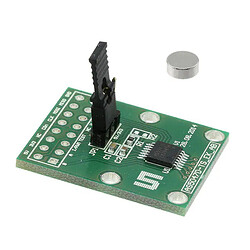Hello from a newbie!
With a fascination for robots but no programming or electronic skill set at all, I’ve decided to do something about it and build myself a robot from scratch. I’m self-learning along the way with an end-goal of building a mobile inverted pendulum robot with articulated legs to vary its height. Like many, I guess I was taken up with the Ascento robot project (https://www.ascento.ethz.ch).
I was also very impressed with Antun’s SimpleFOC Balancer which inclined me to adopt SimpleFOC as the core of my control strategy. The wealth of guidance in the ‘Docs’ and community are very helpful but as I said, this is a steep learning curve for me. I’ve having to teach myself FreeCAD and get to grips with 3d printing, Arduino’s, sensors, coding, etc. The scratch build so far has legs, gimbal motors, position sensors and two SimpleFOC shields (V2.0.4) on an Arduino Mega MCU platform. I now have everything fixed to a rig to begin testing sensors and learn how to code.
I’ve been able to use the SimpleFOC library example to get angle and velocity readings off the AS5600 magnetic position sensors (mounted in bespoke housings on the legs) its at this point however, my ignorance becomes evident. I’m using I2C and I’ve found my choice of position sensors have a fixed address. Can I use an I2C multiplexer or am I expecting too much from my Arduino Mega processing performance? Searching the community forum I’m beginning to doubt my choice of MCU.
Whilst I’m generally pleased with the construction so far, I’m not confident that a stable Balancer is viable on the route I’m taking. I’m now realizing just how ambitious my articulated leg project is.
I propose therefore to take a side step and progress my learning on a proven solution (aka Antun’s Balancer). This should improve my chances of a successful outcome and I can come back to my scratch build from that. Before I re-purpose the hardware on my current build however, is there a better choice of MCU I should be looking at suited to both builds? Are magnetic position sensors reliable enough or would I be better cutting my losses and using AMT-103 encoders?
I looked at AS5048a magnetic sensors with addressable I2C but the I2C solder pad sizes are too small for me. I could manage the PWM option solder pads but my reading on the community forum led me to believe the PWM option is the least reliable for position sensor performance. Lots left to learn but education is a privilege. Thank you for the privilege of such an informative web site!


